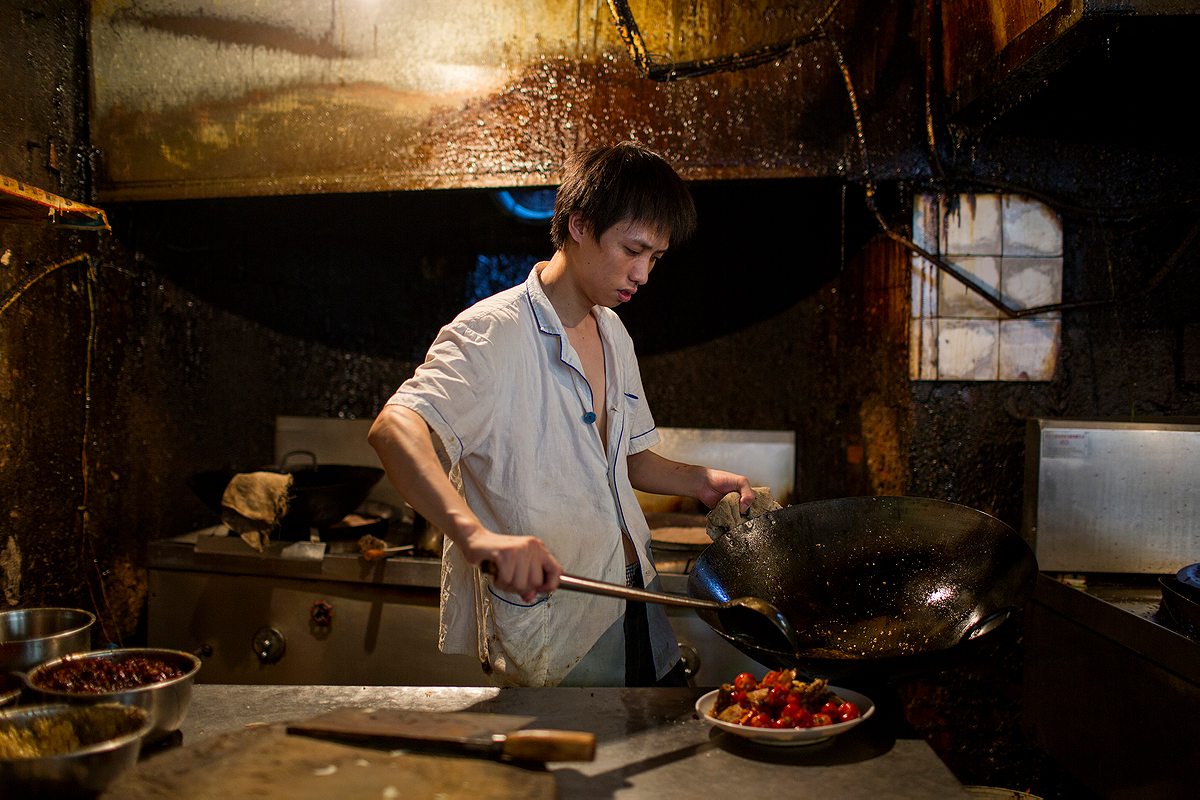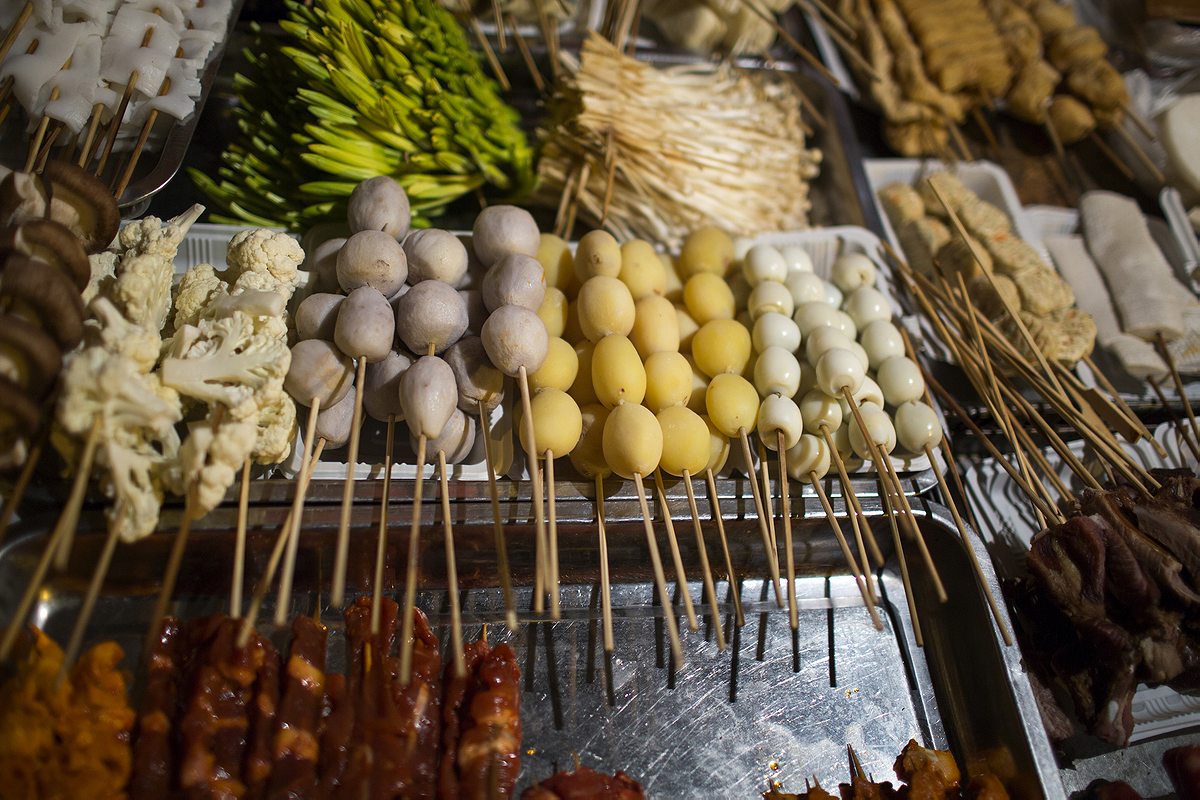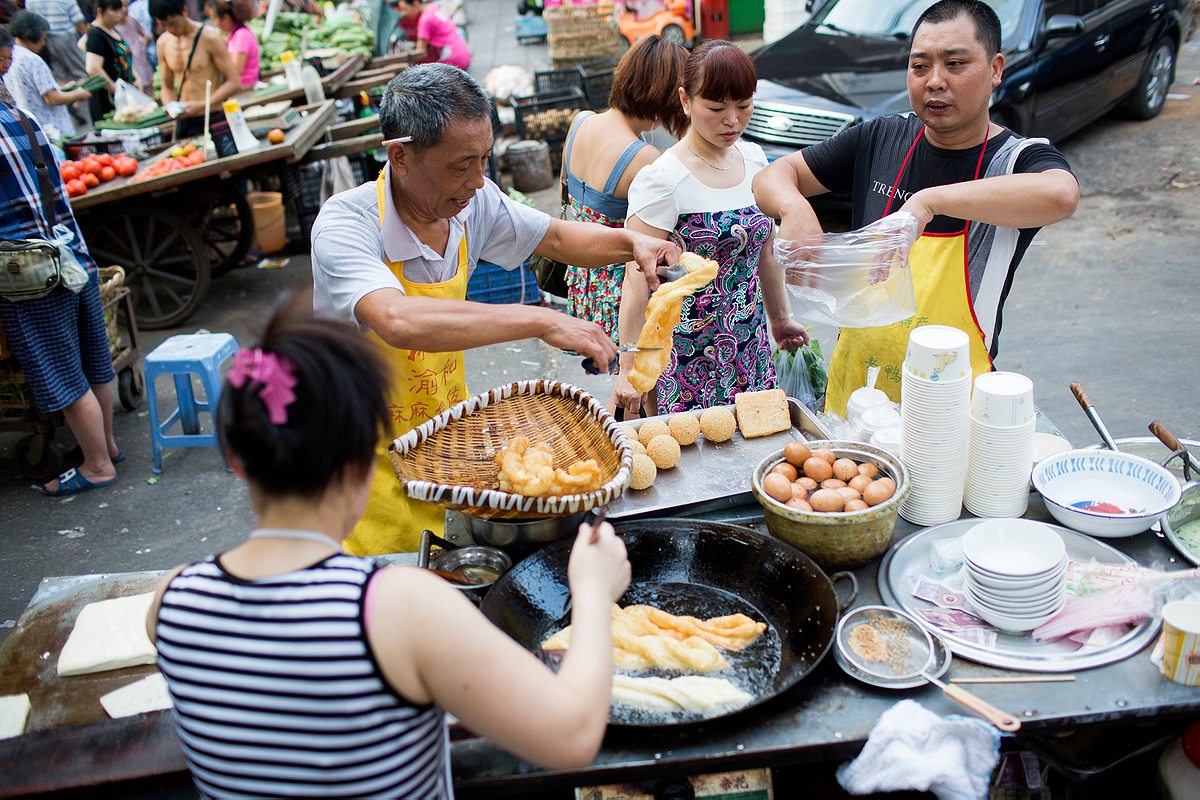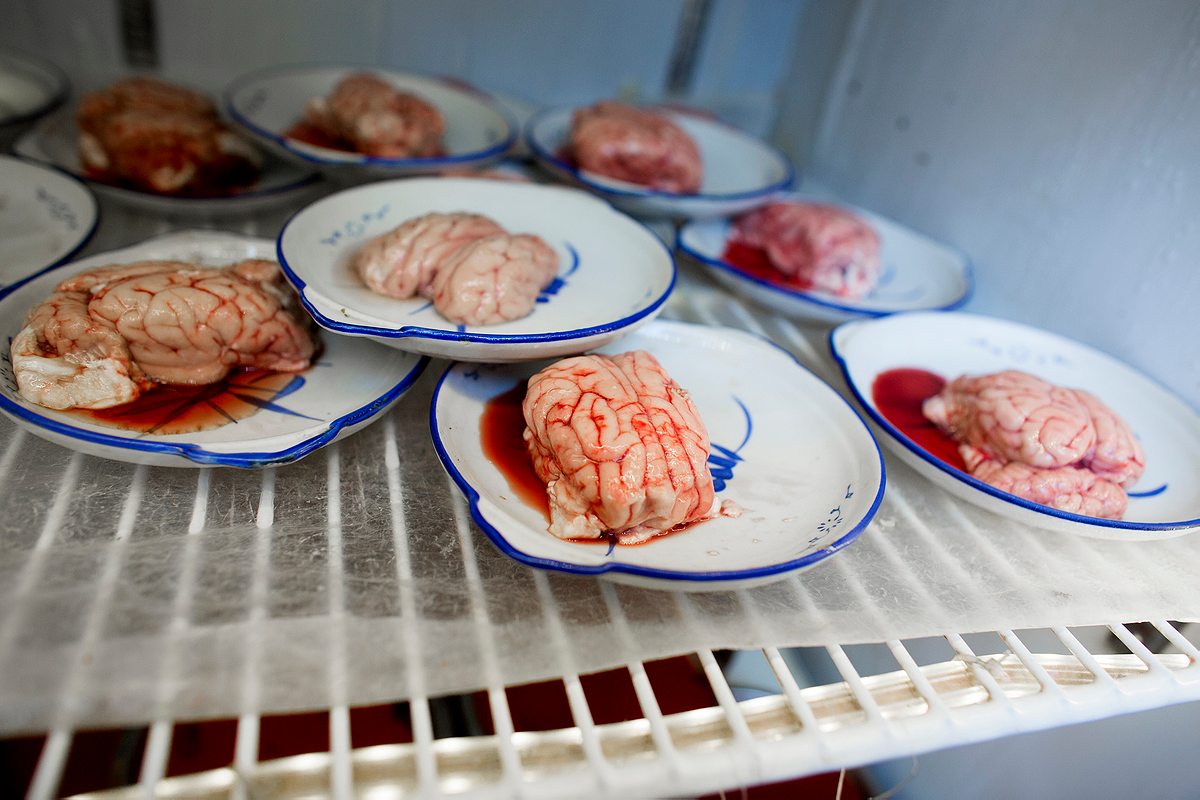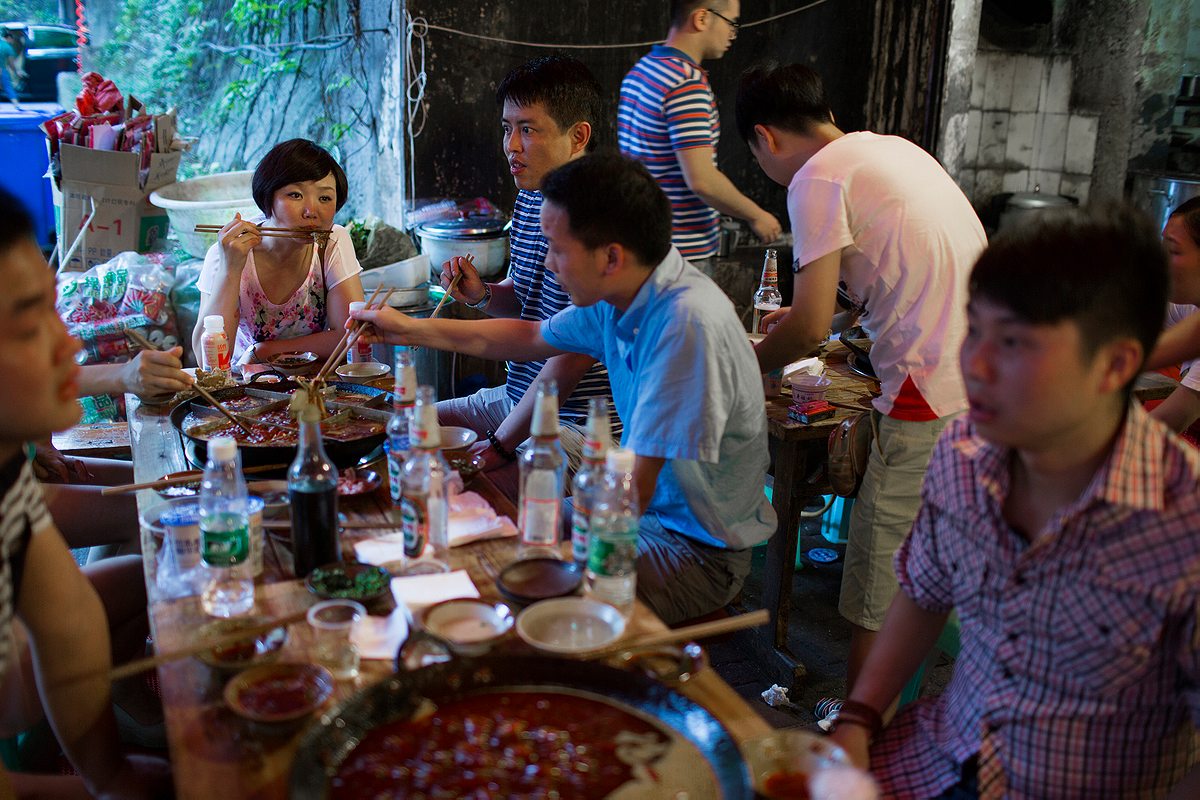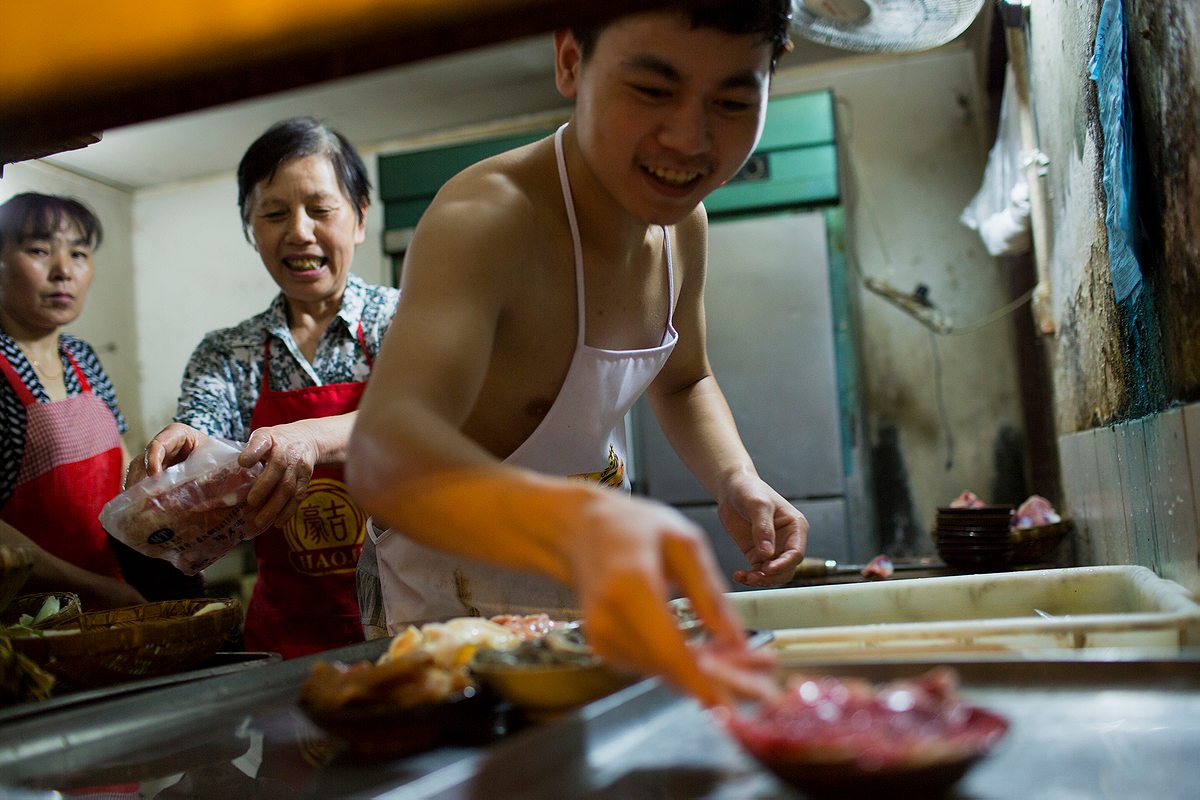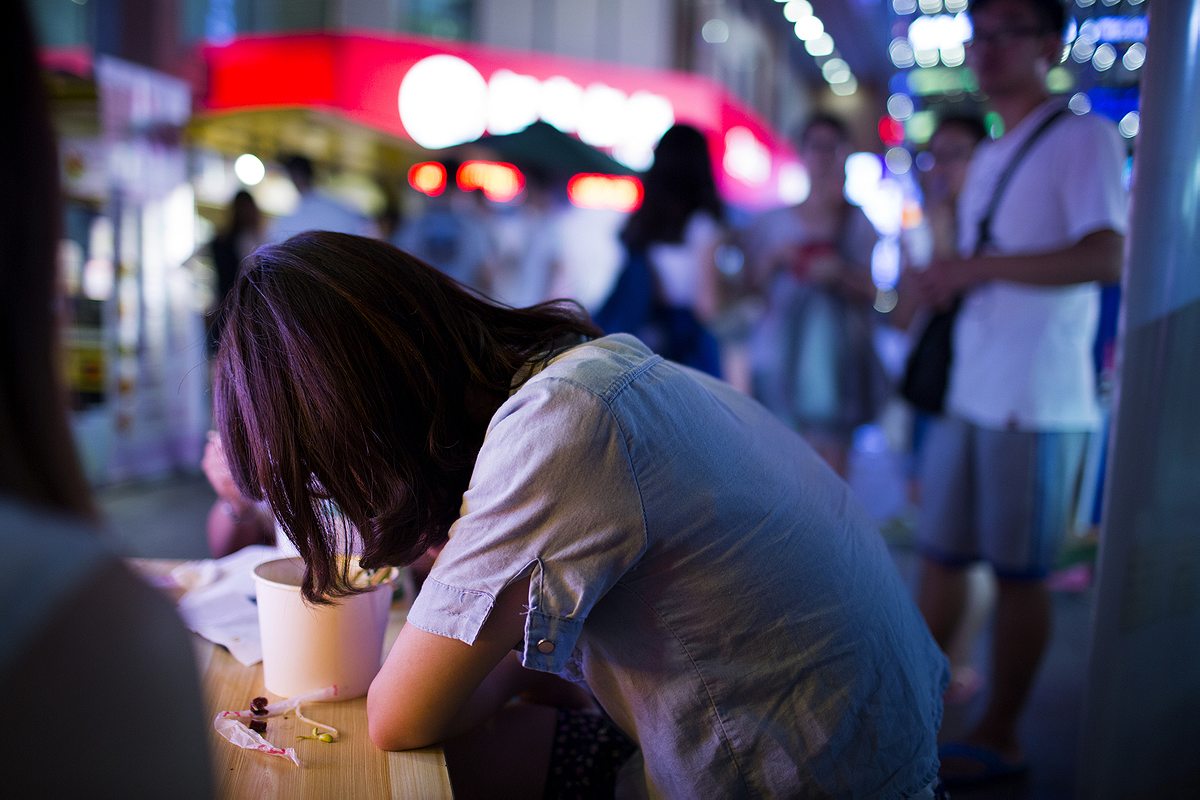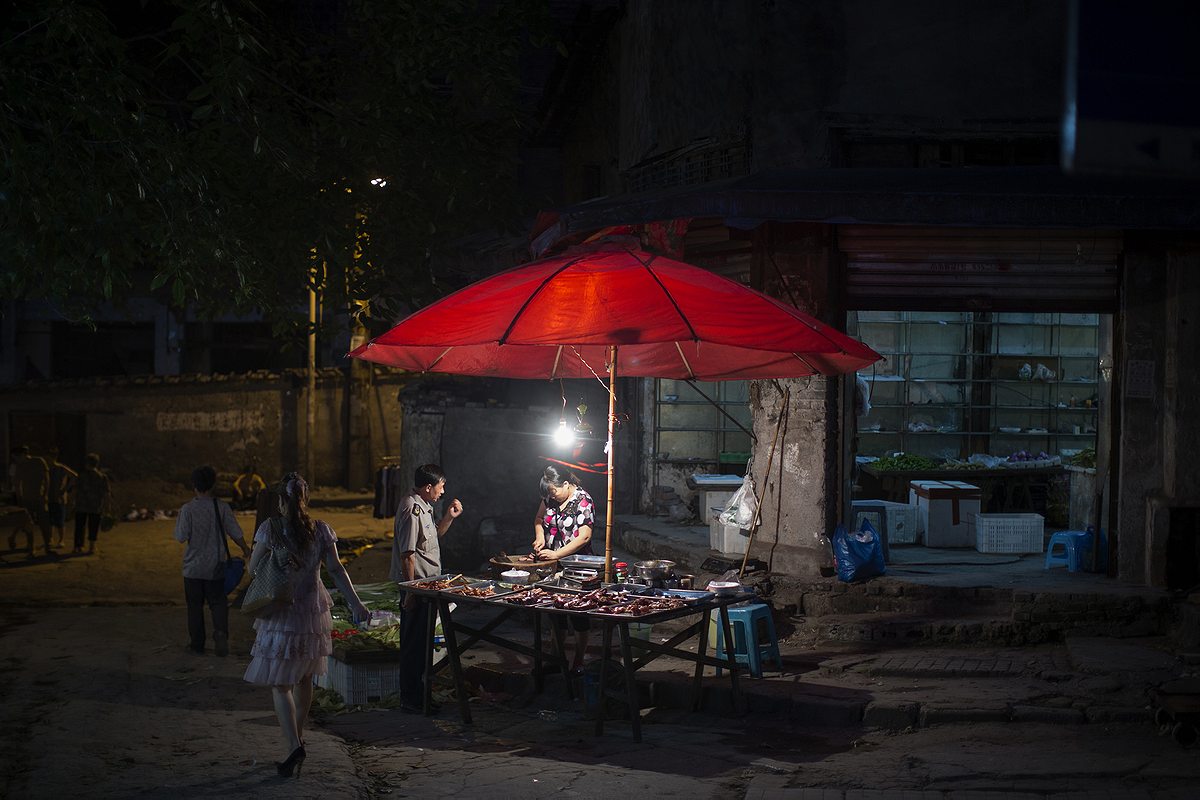It doesn’t matter how many times you tell the cook to go easy on the peppers, anything you order in Chongqing is going to be hot.
It doesn’t matter how many times you tell the cook to go easy on the hot peppers, anything you order in Chongqing is going to be mouth numbing and spicier than you’ve ever tasted before. It will be good, but it will be hot.
The food of Chongqing is a subset of Sichuan cuisine, though there are probably a few places where saying that would be an invitation to a fight, or at least a lengthy debate. What’s undeniable is both cuisines’ incendiary spice levels and mouth-numbing qualities, a combination created by the one-two punch of dried chilies and Sichuan peppercorn, which, I’m told, is more closely related to citrus than anything. A microbiologist I photographed once told me that it numbs your mouth not by dulling your tastebuds but by making them hallucinate. I don’t know if that’s true, but it is a sensation like no other. The first time I stumbled upon Sichuan peppercorn in a meal back in 2007, my mouth went numb. I started drooling a bit and thought something was seriously wrong. Maybe I had been drugged? Maybe the meat was off?
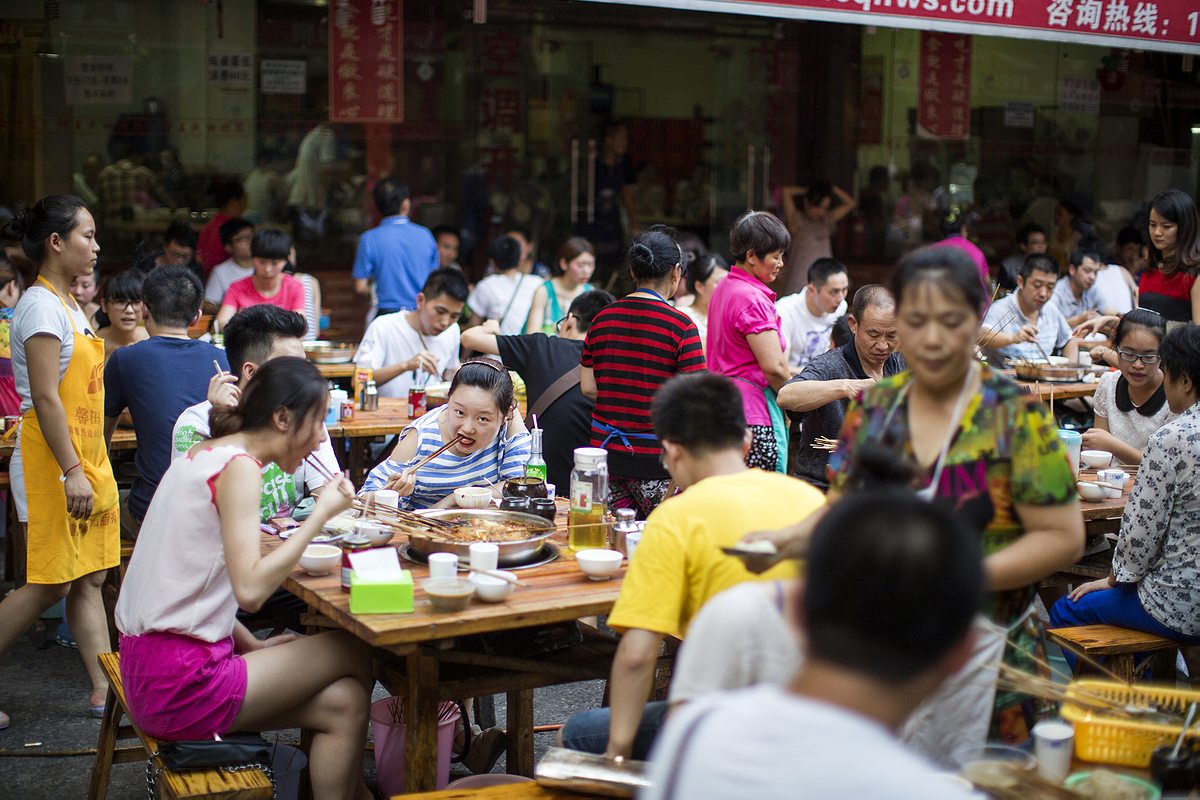
I was in Chongqing for a short week last summer. It’s the one big city in China that I hadn’t visited in my three years living there. Everywhere I went, locals asked how I liked the food. I said I liked it, but it was a little spicy. They would laugh (chortle is probably a better word) and talk proudly about how it’s the spiciest in China. The street food I came across fell into a few categories: hotpot (sometimes with food on skewers, sometimes the raw food was just served in bowls like you see elsewhere in China), barbecue (usually meat, vegetables, and tofu on skewers that are then grilled and spiced–in Chongqing, most vendors then put them in a wok and stir fry them with spices), and noodles of various sorts (usually carried and sold by bangbang porters with noodles on one side of the stick and toppings to add in on the other).
Cooks set up shop on just about every street of Chongqing. In the morning, you can find the standard oil sticks (youtiao) and porridge (xifan or congee), though here, there’s usually an assortment of spicy pickled vegetables, tofus, and beans to add to the bowl. After the heat of the day has broken, vendors start parking their carts at street corners and the edges of plazas around Chongqing. On Shibati, the ancient 18 Steps neighborhood built on a staircase. Near Ciqikou ancient town, where shaokao vendors dominate the sidewalks at night after the tourists have gone. And in Shapingba, where they fill the open areas near Chongqing University’s gates.
In places like Deyi World Plaza, though, Chongqing’s dizzying transformation poses a threat to independent vendors. The city’s glittering clubs and shopping areas have given way to franchise kiosks. When I lived in Nanjing, there was a “civilized city” campaign to rid the city of street vendors. It killed the late-night street food scene. In 2013, Beijing shut down 500 outdoor barbecue vendors to, in their words, fight air pollution (though to outside observers, it seemed that they were just cracking down on the Uighur ethnic minority). Not everyone is a fan of street food. There have been scandals about food safety and some see it as unregulated and unsafe. But for a certain class, street food is a vital part of life. And it’s cheap. One vendor in Shibati had lunch plates for around $1.50. A word to describe them? Spicy.
